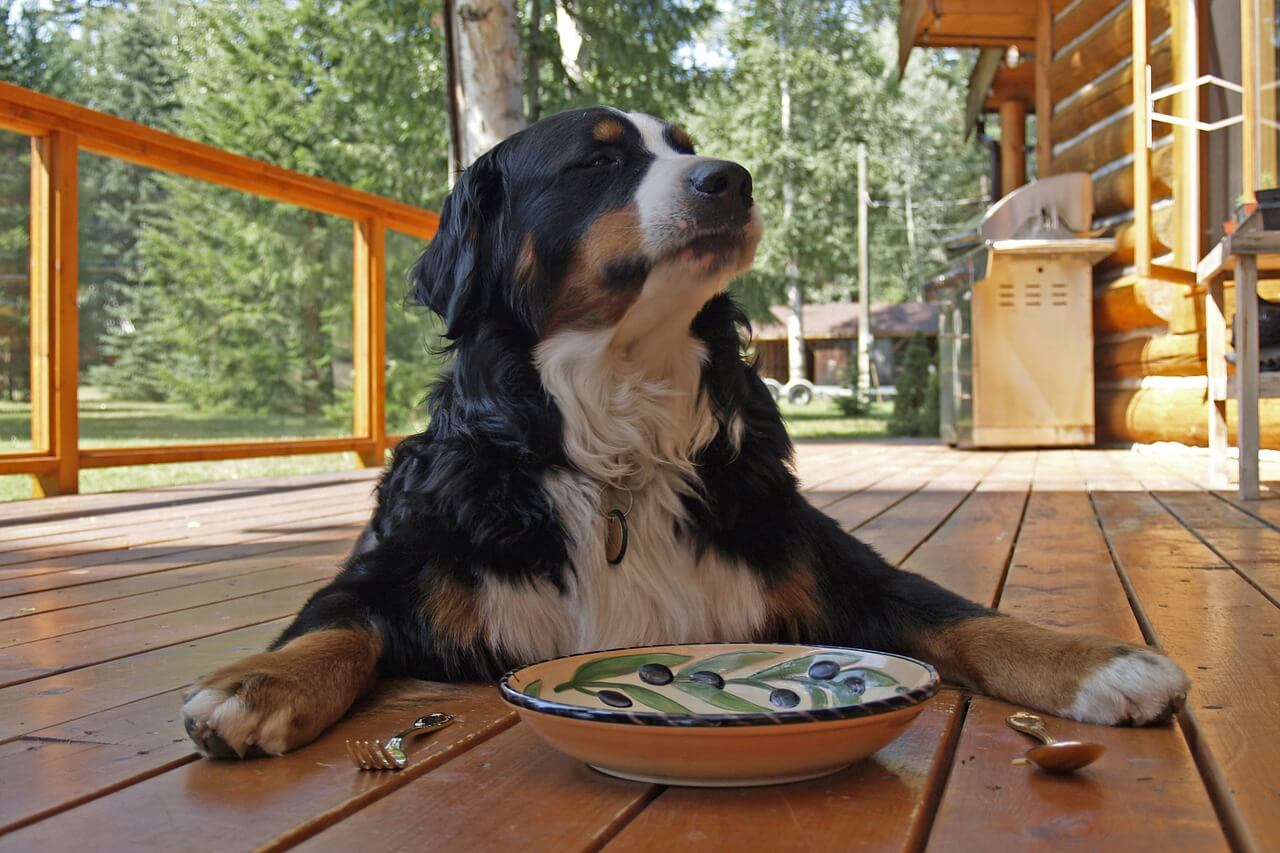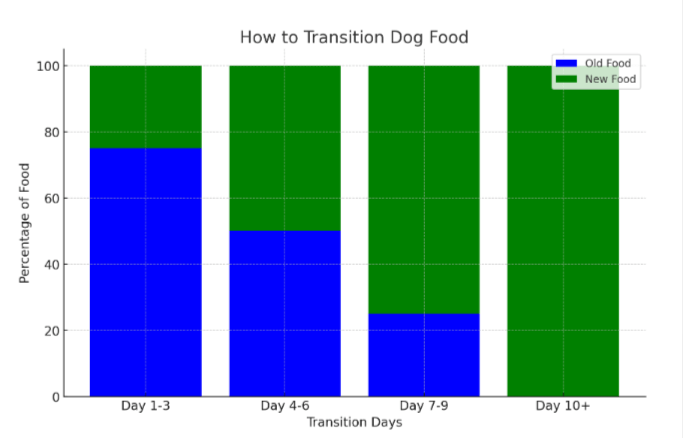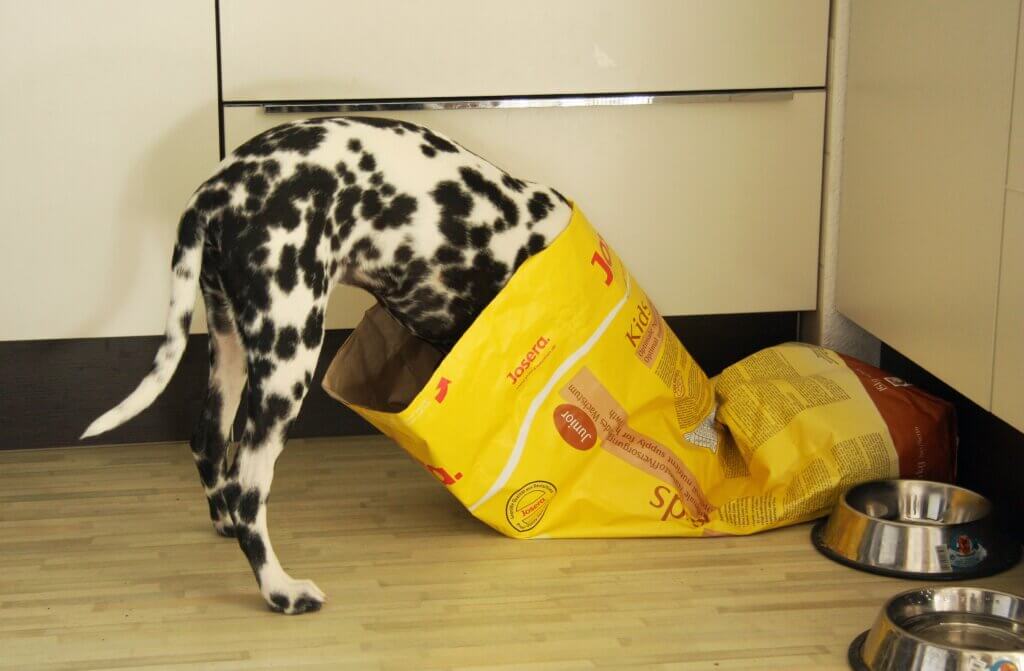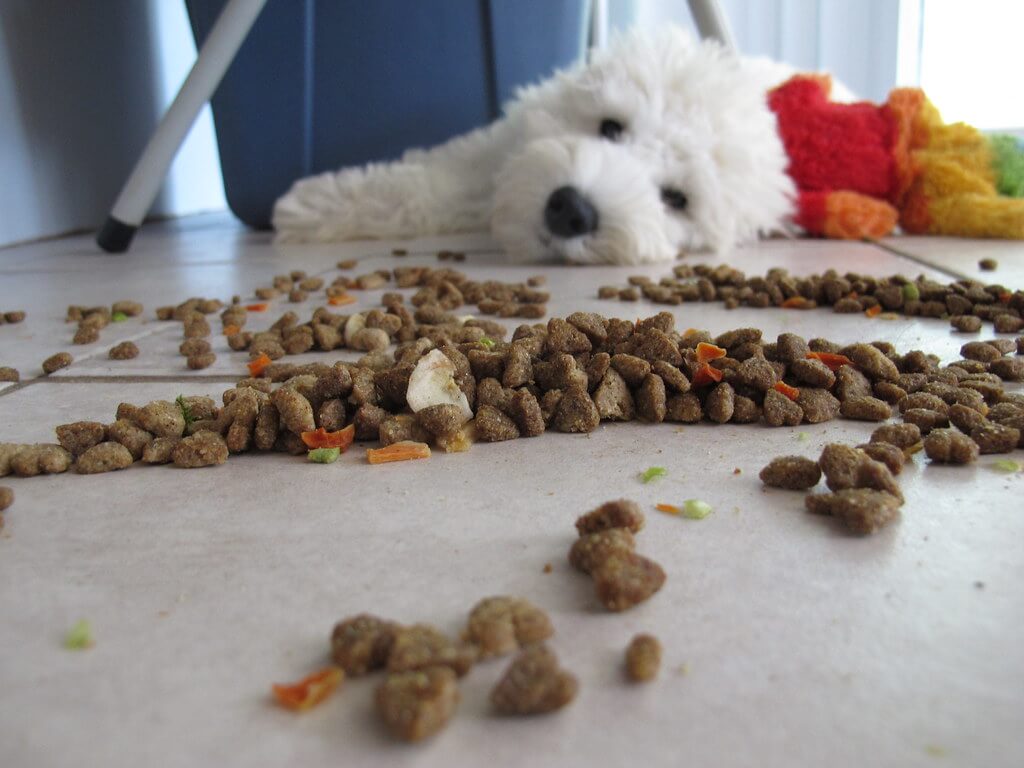How to Transition Dog Food
Transitioning your dog to a new food is an important process that requires careful planning and attention. Understanding how to transition dog food properly can help prevent digestive issues and ensure your pet remains healthy and happy. The importance of transitioning dog food lies in avoiding potential risks such as stomach upset, diarrhea, and nutrient imbalances from abrupt dietary changes.
Switching your dog’s food suddenly can lead to significant problems, including vomiting, loss of appetite, and even long-term health issues. Therefore, it is crucial to follow a gradual process when introducing a new diet. This blog will offer a thorough how-to on transitioning dog food, detailing each step to make the change as smooth as possible for your furry friend.
We will cover the reasons behind the need for a dietary change, the step-by-step process for transitioning your dog to a new food, and specific methods for moving to a raw food diet. Additionally, we will discuss tips for a smooth transition, common challenges and solutions, and considerations for puppies and senior dogs. By comprehending and utilizing these recommendations, you can ensure your pet’s healthy and stress-free transition.
How to Transition Dog to New Food

This table provides a clear, step-by-step guide to help you gradually transition your dog’s food over ten days.
Transition Days Old Food (%) New Food (%)
| Transition Days | Old Food (%) | New Food (%) |
| Day 1-3 | 75% | 25% |
| Day 4-6 | 50% | 50% |
| Day 7-9 | 25% | 75% |
| Day 10+ |
0% | 100% |
This bar chart helps illustrate how the proportion of old food decreases while the proportion of new food increases, ensuring a smooth transition for your dog.

How to Transition Dog to New Food: Detail
Understanding Your Dog’s Nutritional Needs
When learning how to transition dog food, it’s crucial to start by understanding your dog’s nutritional needs. Dogs need to eat a well-balanced diet with the appropriate quantity of protein. Fats, vitamins, and minerals to maintain their health. Factors such as age, breed, size, and activity level all play a role in determining what your dog needs nutritionally. For example, a highly active breed may require more protein and calories, while a senior dog may require a diet richer in fiber and lower in calories.
Assessing Current Diet
Before making any changes, evaluate your dog’s current diet. Is it meeting its nutritional requirements? Look at the ingredient list and nutritional information on the dog food package. Consider whether your dog is thriving on its current diet or if there are signs of deficiency or excess, such as weight gain, a dull coat, lethargy, or digestive issues. Observing your dog’s health and behavior can provide clues about whether its current diet is suitable.
Identifying the Need for Change
You might need to transition your dog to a new food for several reasons. Changes in health, such as the development of allergies, weight gain, or digestive problems, can signal that it’s time for a dietary change. Additionally, life stage changes—like moving from puppyhood to adulthood or from adulthood to senior years—often require adjustments in diet to meet changing nutritional needs. Consulting with your veterinarian can help identify if a new diet is necessary and what type would be best.
Understanding how to transition dog food properly is important to avoid upsetting your dog’s digestive system. A gradual transition, typically over 7–10 days, is recommended. To begin, gradually combine some of the new food with your dog’s meal. A higher percentage of fresh food and a lower percentage of old food. This method helps your dog’s digestive system adapt smoothly to the new diet.
By thoroughly understanding your dog’s nutritional needs, assessing their current diet, and identifying when a change is needed, you can effectively manage how to transition dog food. This careful approach ensures your dog remains healthy and happy during the transition.
Tips for a Smooth Transition

When learning how to transition dog food, following a few crucial pointers can simplify the procedure for you and your dog.
Maintain Consistent Feeding Times
Maintaining consistent feeding times is crucial during the transition period. Because dogs thrive on routine, it is helpful to have set meal times so their digestive system adjusts to the new food. Feed your dog simultaneously each day to establish a predictable schedule. This consistency helps reduce stress and makes monitoring your dog’s response to the new diet easier.
Avoid Giving Treats or Table Scraps During the Transition
During the transition, avoid giving treats or table scraps. Introducing new food is already a significant change for your dog’s digestive system, and adding extra treats or human food can cause confusion and digestive upset. Stick strictly to the planned mix of old and new food to ensure a smooth adjustment. Once the transition is complete and your dog is fully accustomed to the new diet, you can gradually reintroduce treats if necessary.
Ensure Fresh Water is Always Available
Always ensure fresh water is available for your dog. Hydration is vital, especially when changing their diet. New foods can affect your dog’s hydration needs, particularly if switching from dry to wet food or a raw diet. Fresh water helps facilitate digestion and can help prevent any potential issues like constipation or dehydration.
By following these tips on how to transition dog food, you can guarantee a seamless and successful dietary change for your dog. Maintaining consistent feeding times, avoiding additional treats, and providing plenty of fresh water are key practices to support your dog’s health and well-being during the transition.
How to Transition Dog to Raw Food
Switching to raw food for your dog can bring numerous health benefits, but it is crucial to use a systematic approach to ensure your dog’s health and well-being. Here is a detailed guide on transitioning from dog food to a raw diet.
Benefits of a Raw Food Diet
Making the shift to a raw food diet can provide several advantages for your dog:
Improved coat and skin health: Many dog owners notice shinier coats and healthier skin after transitioning to raw food. The minerals and natural oils in uncooked food contribute significantly to this improvement.
Better digestion and stool quality: Raw food is frequently simpler for dogs to process, resulting in smaller, firmer stools and fewer digestive issues. The natural enzymes in raw food help with better digestion and nutrient absorption.
Increased energy and vitality: Dogs on a raw food diet frequently show higher energy levels and greater overall vitality. A raw diet closely mimics what their ancestors ate in the wild, providing more natural and bioavailable nutrients.
Steps to Transition Dog to Raw Food Diet
Assess Your Dog’s Health
Before starting the transition, consult with a veterinarian. It’s important to ensure your dog is healthy enough for the change. The vet can provide valuable advice tailored to your dog’s needs and may recommend certain raw food sources or supplements to ensure a balanced diet.
Perform necessary health checks to make sure your dog is in good condition. This might include blood tests, checking for any underlying health issues, and assessing the overall fitness levels that a dietary change could impact.
Start with a Partial Transition
Begin by introducing raw food as 10-20% of the diet. Mix this small amount of raw food with your dog’s current food to help their digestive system adjust gradually. For example, if your dog consumes two cups of food per meal, you could start by swapping out 1/4 to 1/2 cup of their current food with raw food.
Keep an eye out for any indications of discomfort or digestive issues during this initial phase. Look out for changes in stool consistency, vomiting, or reluctance to eat the new food. This step is crucial for gauging your dog’s tolerance to raw food.
Gradually Increase Raw Food Portion
Over the next two weeks, increase raw food to 50% of the diet. With this systematic approach, your dog can become used to the new food without overwhelming their digestive system. For example, after the initial phase, you can replace one full cup of their meal with raw food.
Keep an eye out for any negative responses, including diarrhea. Vomiting, or noticeable changes in behavior or energy levels. If any issues arise, consult your vet promptly to adjust the transition plan if necessary.
Complete Transition
Finally, move to a 100% raw diet over 4-6 weeks. By the end of this period, your dog should be fully accustomed to the raw food diet. To ensure balanced nutrition with varied raw food sources, provide a mix of different types of meat, organs, and bones. For example:
- Muscle meats like chicken, beef, or turkey
- Organs such as the liver and kidneys
- Raw meaty bones for calcium and phosphorus
Variety is essential to providing the entire spectrum of nutrients. Based on your vet’s advice, consider supplementing with fish oil for omega-3 fatty acids and occasionally including vegetables and fruits for added vitamins and fiber.
Following these steps on transitioning dog food to a raw diet can guarantee a seamless and healthy change for your pet. It is crucial to have patience and exercise caution throughout this transition to support your dog’s health and well-being.
How to Transition a Dog to New Food: Key Considerations

When switching your dog’s diet, you must carefully ensure their health and happiness. Here’s how to transition dog food effectively:
- Individual dog’s health and age:
- Every dog is unique, so consider your dog’s health and age before changing their diet.
- Older dogs or dogs with health issues can call for a more gradual changeover to reduce digestive upset.
- Type of new food (dry, wet, raw, etc.):
- Choose the type of new food based on your dog’s preferences and nutritional needs.
- Dry food is convenient and can help clean teeth, while wet food may be more delicious for picky eaters. Raw food diets can offer natural nutrition but require careful preparation.
- Monitoring and adjusting based on the dog’s response:
- Add a tiny amount of fresh meals to their diet. To ease the transition.
- Observe your dog closely for any indications of pain or digestive problems, such as vomiting or diarrhea.
- Gradually increase the amount of new food while reducing the old food over 7-10 days, or longer if needed.
- Should your dog exhibit indications of intolerance or doesn’t seem to like the new food, consult your veterinarian for advice on adjusting the transition plan.
Transitioning your dog to new food requires patience and attention to their needs. By doing these actions, you can guarantee a seamless change and support your dog’s overall well-being.
Special Considerations for Transitioning Puppies and Senior Dogs
When transitioning puppies and senior dogs to a new food, close attention must be paid to their specific requirements to ensure a smooth and healthy change. Here are key considerations and tips for how to transition dog food effectively:
- Adjusting portion sizes:
- Puppies: Puppies have smaller stomachs and higher energy needs than adult dogs. They may benefit from smaller, more frequent meals throughout the day. When transitioning their food, gradually adjust the portions to meet their growing nutritional requirements.
- Senior Dogs: Senior dogs often have slower metabolisms and reduced activity levels. They may require fewer calories and smaller portions to maintain a healthy weight. To begin, progressively decrease the serving size of their current food as you introduce the new food.
-
Extra care for sensitive stomachs:
- Both puppies and senior dogs can have sensitive stomachs, making them prone to digestive upset when changing their diet. To minimize discomfort:
- Combine a tiny bit of the new meal with what they are eating now.
- Monitor their stool consistency and watch out for signs of stomach distress, like vomiting, diarrhea, or refusal to eat.
- Choose a new food that is gentle on the stomach, such as formulas designed for sensitive digestion or easily digestible options like chicken or rice-based diets.
-
Frequent vet check-ups:
- Regular veterinary check-ups are crucial for puppies and seniors, especially during transitions to new food. Your vet can:
- Assess your dog’s overall health and provide tailored advice on transitioning their diet.
- Monitor any weight, appetite, or behavior changes that may indicate the need for dietary adjustments.
- Recommend specific diets or supplements that cater to your dog’s age-related nutritional requirements or health conditions.
-
Gradual transition and patience:
- Slowly introduce the new food over 7–10 days or longer, depending on your dog’s tolerance.
- Observe their response closely and be prepared to adjust the transition plan if they experience digestive issues or reluctance to eat.
- Patience is key; rushing the transition can lead to stress and discomfort for your dog.
-
Consider specialized diets:
- Depending on your puppy or senior dog’s health needs, your veterinarian may recommend specialized diets such as:
- Puppy formulas are enriched with essential nutrients for growth and development.
- Senior diets with reduced calories, joint support, or added antioxidants to support aging.
- Prescription diets are tailored to manage specific health conditions like kidney disease, arthritis, or allergies.
By considering these special considerations and By adhering to a plan of gradual transition, you can assist in guaranteeing a successful switch to new food while supporting your puppy or senior dog’s overall health and well-being. Always seek advice from your veterinarian based on your dog’s needs.
How to transition dog food: (FAQs)
-
How long does it take to transition to dog food?
- Typically, it takes about 7–10 days to transition your dog to a new food. Begin by combining a tiny quantity of the new meal with their existing meal and gradually increasing the proportion over time.
-
What happens if my dog rejects the new food?
- If your dog refuses to eat the new food, try mixing it with their current food or adding something they find tasty, like broth. Slowly increase the proportion of the new food as they become accustomed to it.
-
How can I tell if the new diet works for my dog?
- You can tell if the new diet works if your dog has healthy digestion, maintains a stable weight, has a shiny coat, and displays good energy levels. Monitor their overall health and behavior during the transition period.
-
Are there specific signs that indicate a problem with the new diet?
- Signs of a problem with the new diet include diarrhea, vomiting, excessive gas, lethargy, or changes in appetite. If you notice any of these signs, consult your veterinarian for advice on modifying the shift. Plan or choose a different food option.
Conclusion
Transitioning your dog to new food is a process that requires careful consideration and patience. Here’s a summary of key points to ensure a successful transition:
A recap of the importance of a gradual transition:
- Gradually introducing the new food over 7–10 days helps your dog adjust and prevent stomach distress comfortably.
Encouragement to consult with a vet for personalized advice:
- You must speak with your veterinarian before implementing any dietary adjustments, particularly if your dog has certain nutritional requirements or health issues.
Final tips for ensuring a healthy diet change:
- Monitor your dog’s response closely during the transition period.
- Adjust portion sizes as needed for puppies and senior dogs.
- Look for signs that indicate the new diet is working well, such as healthy digestion and energy levels.
- Be alert for any signs of intolerance or digestive issues, and seek veterinary advice promptly if needed.
By taking these actions and getting expert advice where necessary, you can guarantee a seamless and healthy transition to a new diet for your dog, supporting their overall well-being and happiness.
YOU MAY ALSO LIKE:
How to Stop Food Aggression in Dogs Towards Other Dogs
How many cups of food should I feed my dog?
How to Stop Food Aggression in Dogs
How Many Cups in a Pound of Dog Food
How Long Does it Take a Dog to Digest Food
Why is My Dog Always Hungry
How Much Protein is in Dog Food?
How to Make Dog Food
how long to feed dog puppy food
What is The Cost to Make Homemade Dog Food?
How to Make Homemade Raw Dog Food
How to Make Homemade Dry Dog Food
How to Prepare Dog Food at Home for Senior Dogs
How to Train a Dog That is Not Food-Motivated
How Much Food Should I Feed
How To Store Dog Food
How Much Time Can a Dog Survive Without Consuming Water
How Long Can a Dog Survive Without Food?

